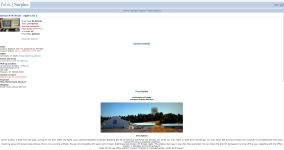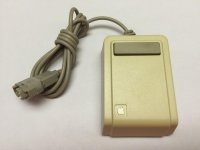The Lisa is one of my favourite computers. It is, in virtually every respect, fantastically overdesigned. This makes careful study of the machine quite enjoyable to me.
Note careful addition of "to me" there. Everyone has their own unique taste. You like what you like, and if you need to have a wide range of 3rd-party applications or games, then the Lisa is probably not for you. The price is also prohibitive. Both of these observations have been made very well on this thread. I am glad I bought my Lisas over 25 years ago.
If I won the lottery tomorrow and if perhaps there were two of me, here are some of the things I'd (we'd) do with my Lisas. Yes, you can do many things like these with other computers. That's not the point.
- Explore the capabilities of the floppy disk subsystem on the Lisa (especially the Lisa 1). Study the I/O ROM. Make use of the ability to execute arbitrary code on the 6504 I/O processor: perhaps you can read old Twiggy disks more robustly than even low-level tools like BLU can do.
- Try to make the most compact possible RAM board for the Lisa. You ought to be able to design something that barely rises out of the slot! (Add pull tabs to make sure you can get the board out!) What if you used a non-volatile RAM like FRAM --- does that even make sense? (I'd like to learn more about FRAM.)
- Finally complete my investigation of AppleNet, the network adaptor for Lisa that never saw the light of day. Find a way to establish an AppleNet network between my two machines --- and maybe a RasPi or something.
- Write a Lisa device driver that simplifies interfacing with modern storage systems: wouldn't it be nice to have a networked drive? Maybe with some additional custom hardware you could get Lisa on FujiNet.
- Hack the Pascal Monitor so it can boot off of a ProFile hard drive. Make a ProFile disk image with Smalltalk installed so that you don't have to run it off of Twiggies.
- (the big one) Write a complicated application that makes use of the Lisa ToolKit. We have all the documentation and software we need for this, and I don't think anyone's tried it. The Lisa Office System clearly needs its own PowerPoint

- Really study the OS and application source code.
- Use the system as a subject for really learning electronics in detail.
- Expand my lisa_io library to support things like the serial port and the floppy.
The first three items are things you definitely need hardware for. Emulation is still not perfect, so some of the others could require hardware too. I'm not sure that LisaEm can run the compiler and linker in the workshop these days, but it's been ages since I've tried.
I dispute that the Lisa did "little" when it was a contemporary machine. There's the graphical office suite which we know, but there were also two or three flavours of UNIX, it was the initial development host for all Macintosh programming, and there were a variety of custom in-house applications that took advantage of the Lisa's bitmap display to do all sorts of things like
make the BBC's weather maps. Xenix shipped with a document processing system among other applications. Speaking of document processing, Compugraphic made a
desktop publishing system for the machine, complete with laser printer. We know too that
NASA loved the Lisa for project planning, and according to that page NASA was Lisa's largest install base. Finally, you can't really say that MacWorks doesn't count: the whole capability that made the Macintosh XL possible owes to the ambitious (over)design of the system, specifically its MMU. Is this really the story of a "useless" machine?
I think
@3lectr1c has some very good reasons why there isn't a lot of development in the Lisa world. Scarcity is another obvious reason, but I'd also add complexity. You need to
study if you're going to write Lisa software that runs on the Office System. It's not really a system where you can memorise the memory map and learn a few of the tricks and crank out a cool app in relatively short order. I think this is a factor in recreational Mac development too, as it must be for Windows 2.x. As it probably is for Amiga (dunno, haven't tried it), but there as
@3lectr1c notes you do have the graphics and sound payoff. There's a reason my most substantial Lisa applications are assembly programs that run on the bare metal: it's much easier that way. (Update: looks like
@werdna beat me to the post button

!)
But sure, if you're not really interested in the machine itself as an object of study, and if you can do nothing else but wait around for someone to write an application that you personally find interesting, then the Lisa is liable to remain USELESS!!!1!!1 to you for a while to come. I don't plan to retire for a while yet!



